Lecture 20: The Cytoskeleton: Intermediate Filaments and Microtubules

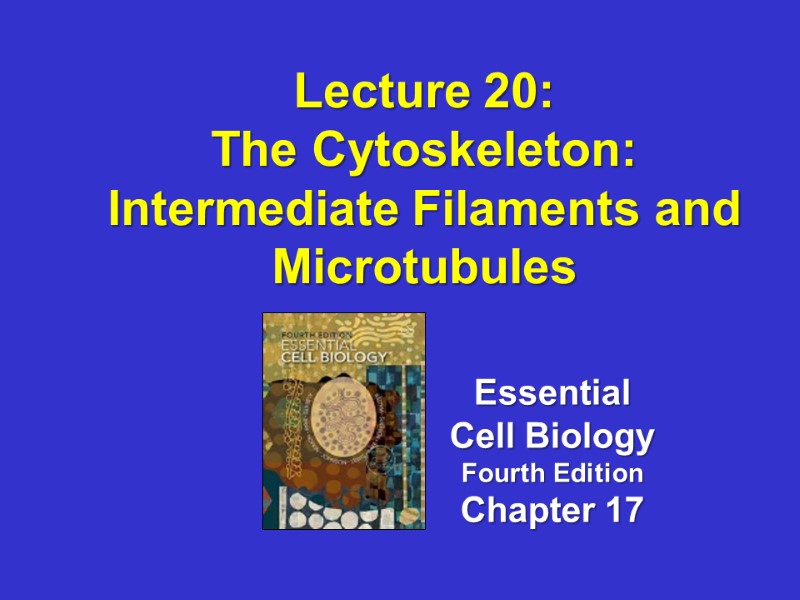
Lecture 20: The Cytoskeleton: Intermediate Filaments and Microtubules Essential Cell Biology Fourth Edition Chapter 17
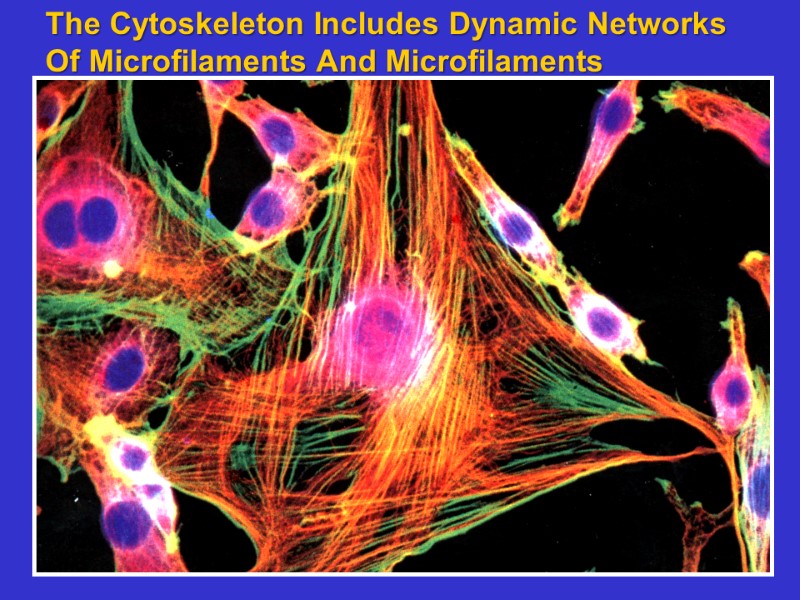
The Cytoskeleton Includes Dynamic Networks Of Microfilaments And Microfilaments
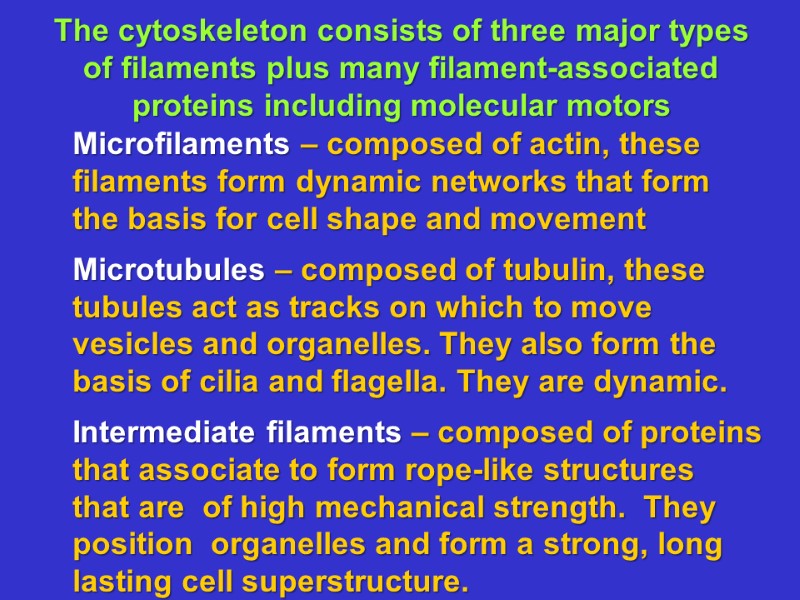
The cytoskeleton consists of three major types of filaments plus many filament-associated proteins including molecular motors Microfilaments – composed of actin, these filaments form dynamic networks that form the basis for cell shape and movement Microtubules – composed of tubulin, these tubules act as tracks on which to move vesicles and organelles. They also form the basis of cilia and flagella. They are dynamic. Intermediate filaments – composed of proteins that associate to form rope-like structures that are of high mechanical strength. They position organelles and form a strong, long lasting cell superstructure.
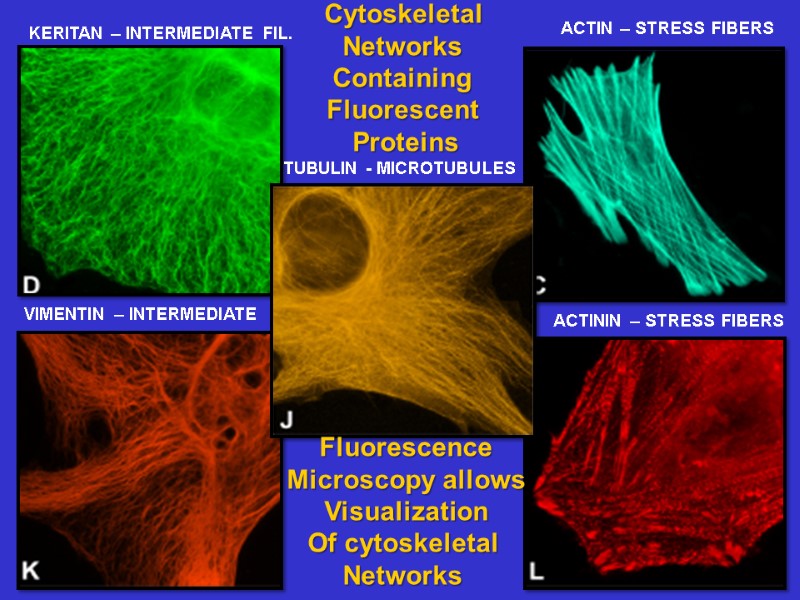
YPET – MAP R – MT PLUS END KERITAN – INTERMEDIATE FIL. ACTIN – STRESS FIBERS ACTININ – STRESS FIBERS VIMENTIN – INTERMEDIATE TUBULIN - MICROTUBULES Cytoskeletal Networks Containing Fluorescent Proteins Fluorescence Microscopy allows Visualization Of cytoskeletal Networks
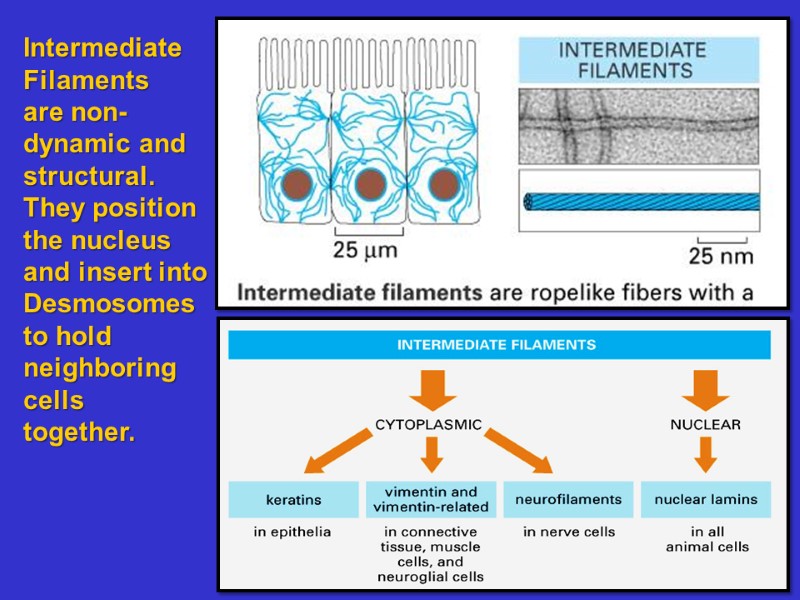
Intermediate Filaments are non- dynamic and structural. They position the nucleus and insert into Desmosomes to hold neighboring cells together.
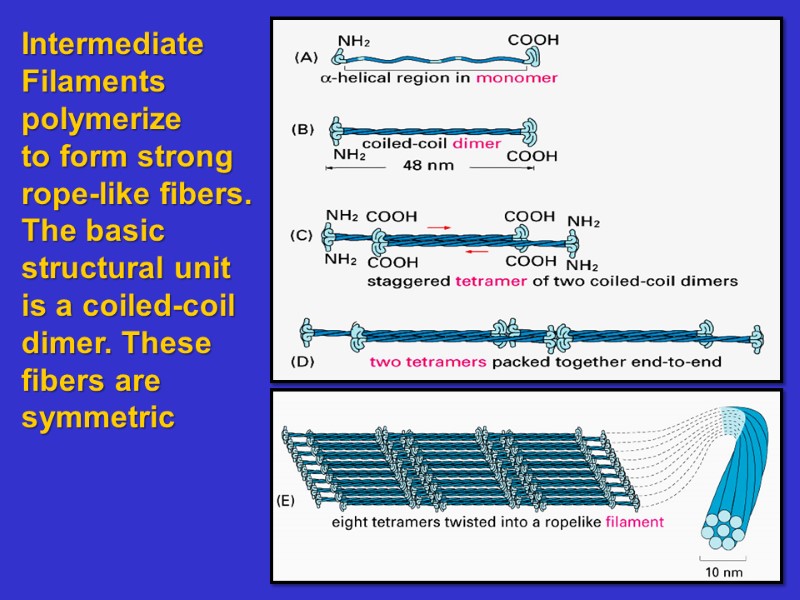
Intermediate Filaments polymerize to form strong rope-like fibers. The basic structural unit is a coiled-coil dimer. These fibers are symmetric
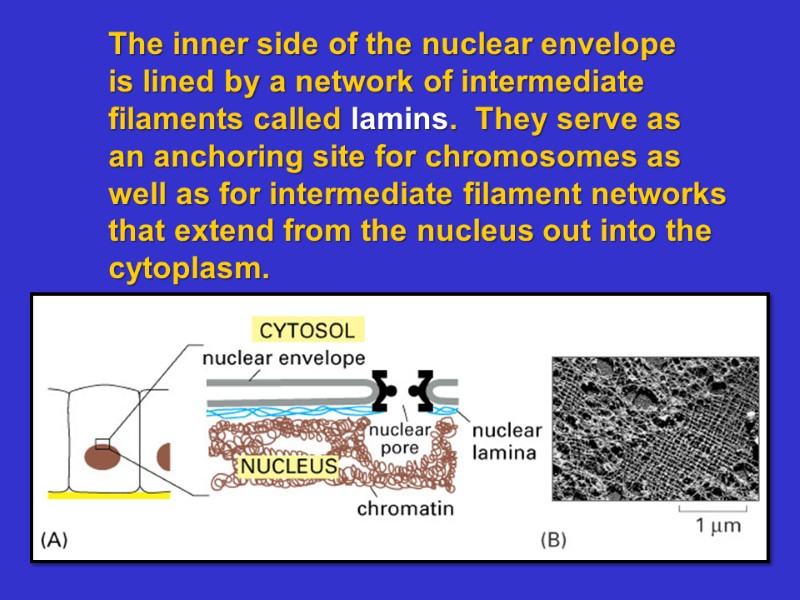
The inner side of the nuclear envelope is lined by a network of intermediate filaments called lamins. They serve as an anchoring site for chromosomes as well as for intermediate filament networks that extend from the nucleus out into the cytoplasm.
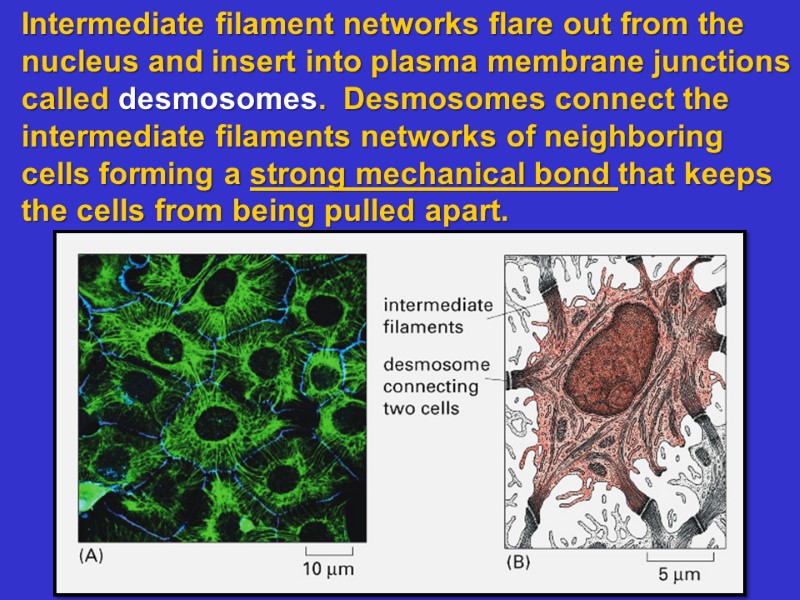
Intermediate filament networks flare out from the nucleus and insert into plasma membrane junctions called desmosomes. Desmosomes connect the intermediate filaments networks of neighboring cells forming a strong mechanical bond that keeps the cells from being pulled apart.
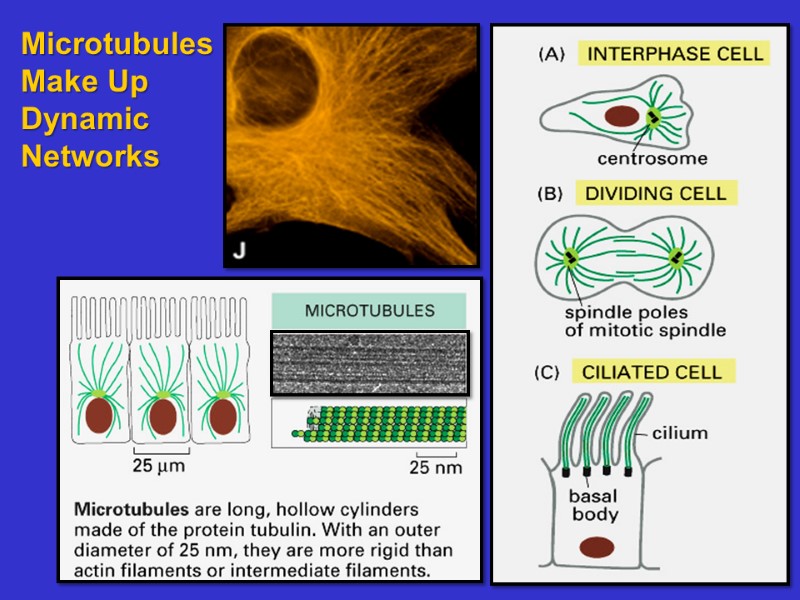
Microtubules Make Up Dynamic Networks
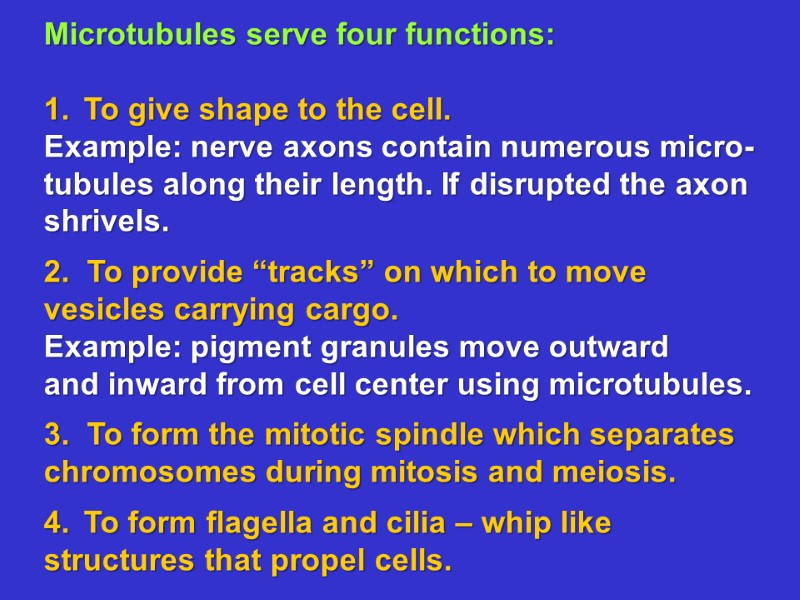
Microtubules serve four functions: To give shape to the cell. Example: nerve axons contain numerous micro- tubules along their length. If disrupted the axon shrivels. 2. To provide “tracks” on which to move vesicles carrying cargo. Example: pigment granules move outward and inward from cell center using microtubules. 3. To form the mitotic spindle which separates chromosomes during mitosis and meiosis. To form flagella and cilia – whip like structures that propel cells.
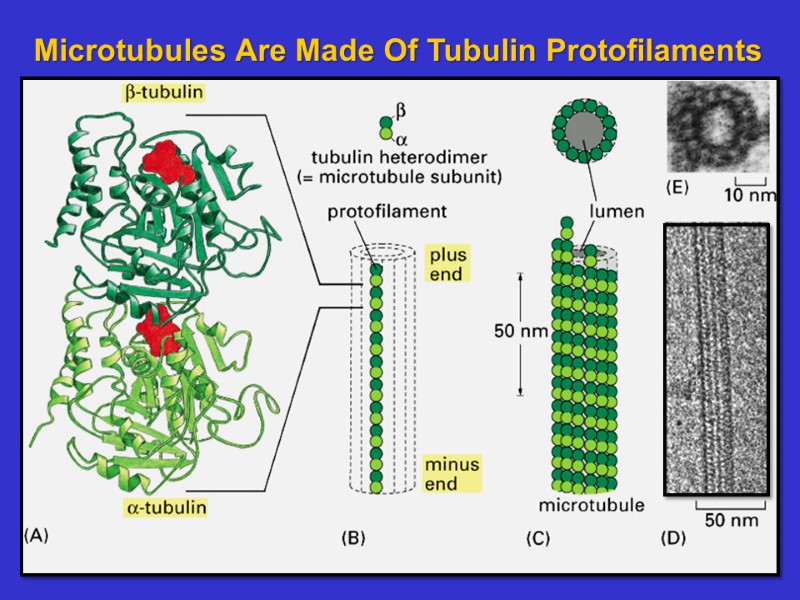
Microtubules Are Made Of Tubulin Protofilaments
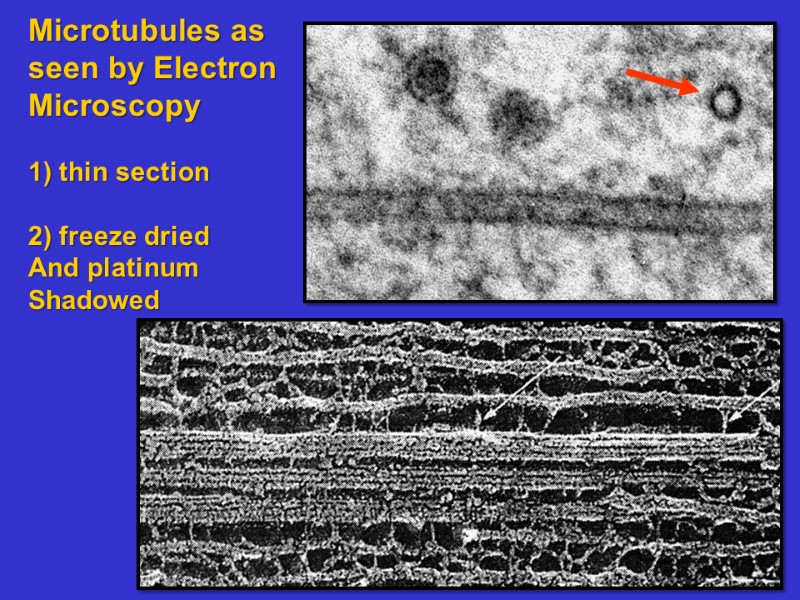
Microtubules as seen by Electron Microscopy 1) thin section 2) freeze dried And platinum Shadowed
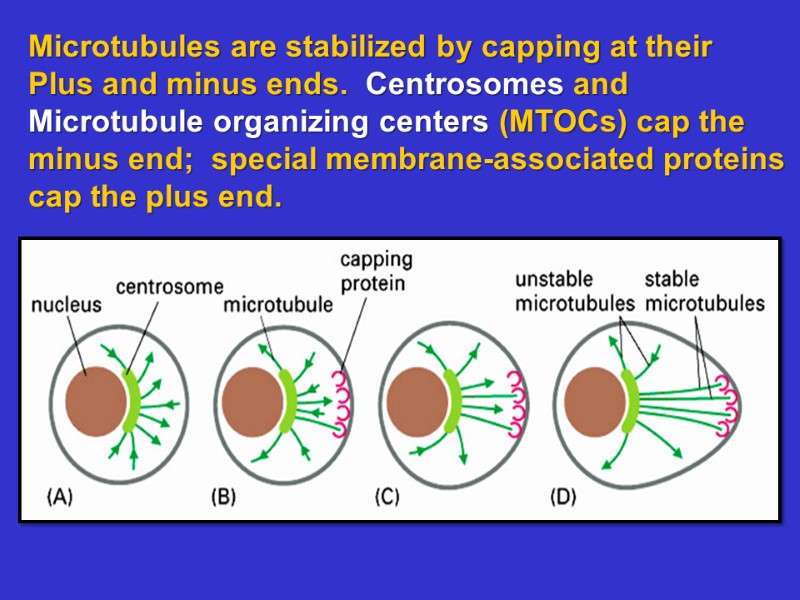
Microtubules are stabilized by capping at their Plus and minus ends. Centrosomes and Microtubule organizing centers (MTOCs) cap the minus end; special membrane-associated proteins cap the plus end.
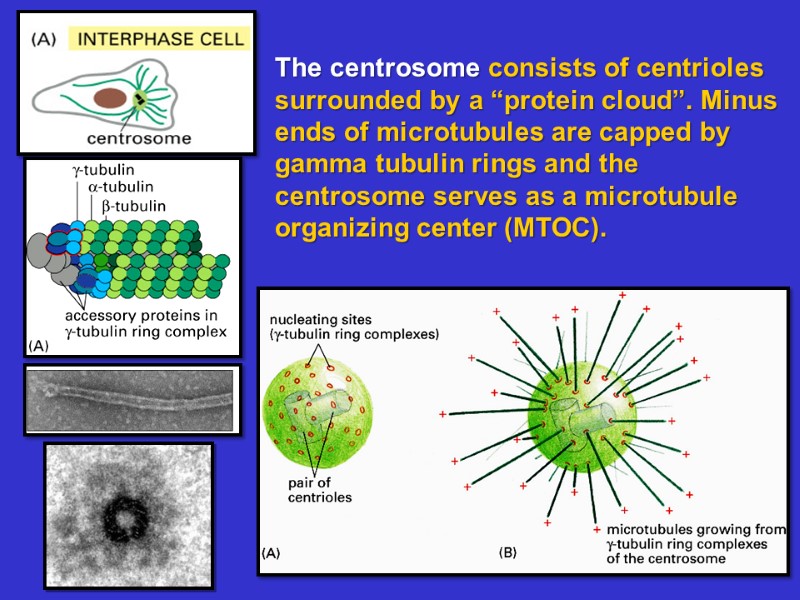
The centrosome consists of centrioles surrounded by a “protein cloud”. Minus ends of microtubules are capped by gamma tubulin rings and the centrosome serves as a microtubule organizing center (MTOC).
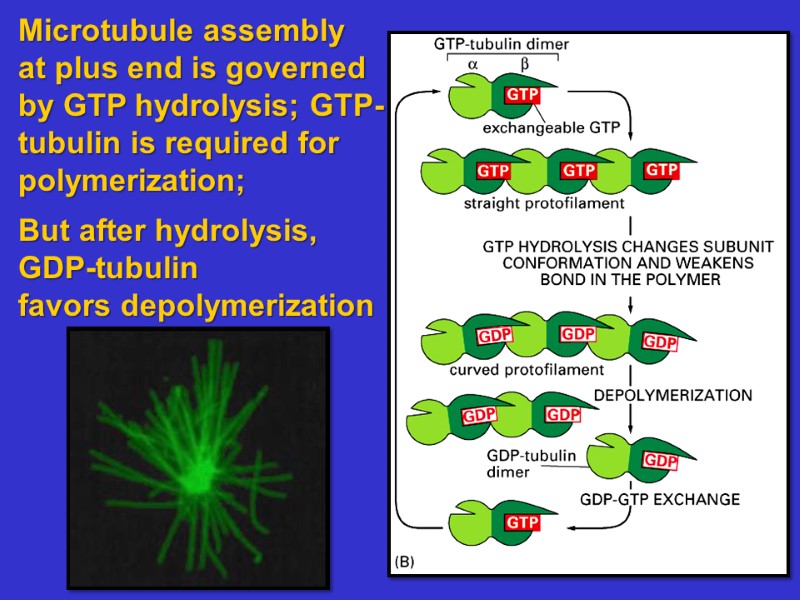
Microtubule assembly at plus end is governed by GTP hydrolysis; GTP- tubulin is required for polymerization; But after hydrolysis, GDP-tubulin favors depolymerization
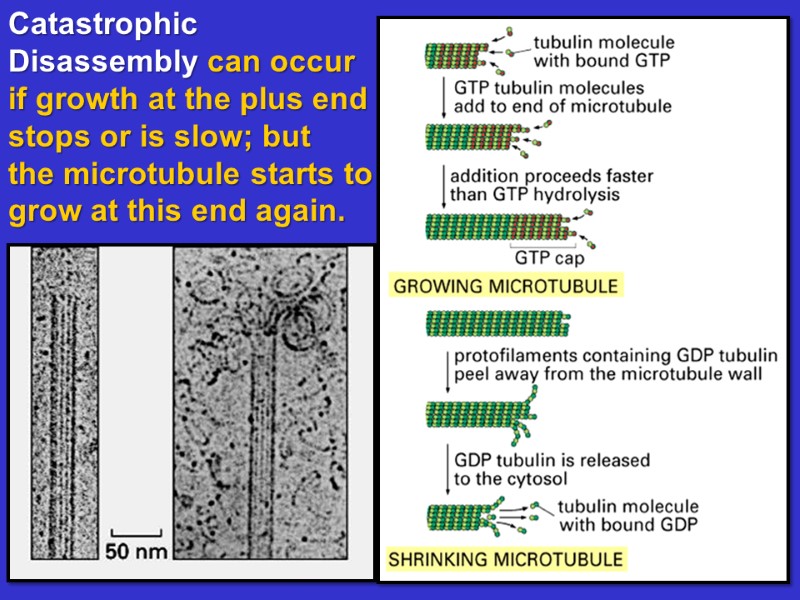
Catastrophic Disassembly can occur if growth at the plus end stops or is slow; but the microtubule starts to grow at this end again.
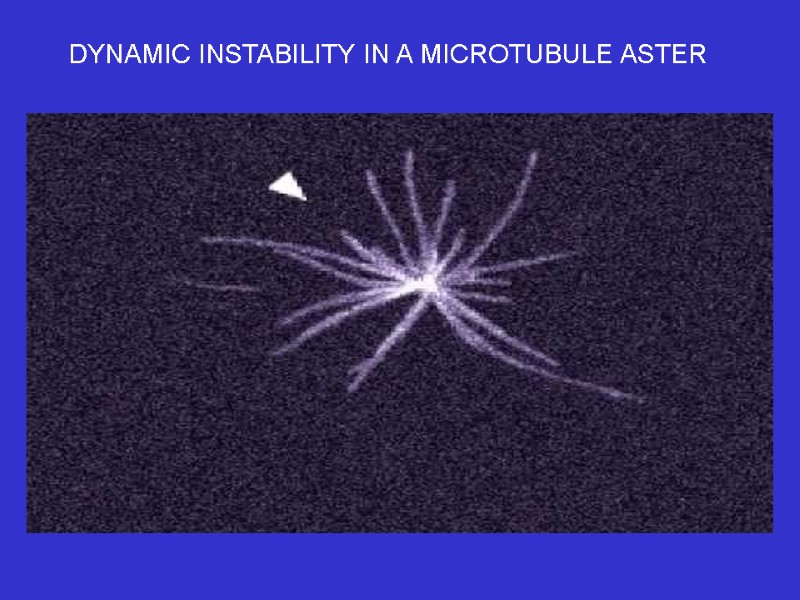
DYNAMIC INSTABILITY IN A MICROTUBULE ASTER
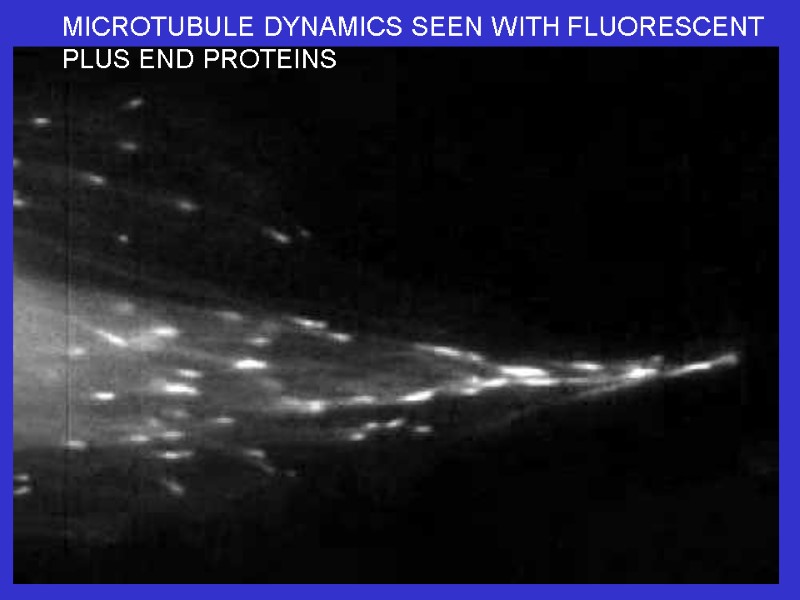
MICROTUBULE DYNAMICS SEEN WITH FLUORESCENT PLUS END PROTEINS
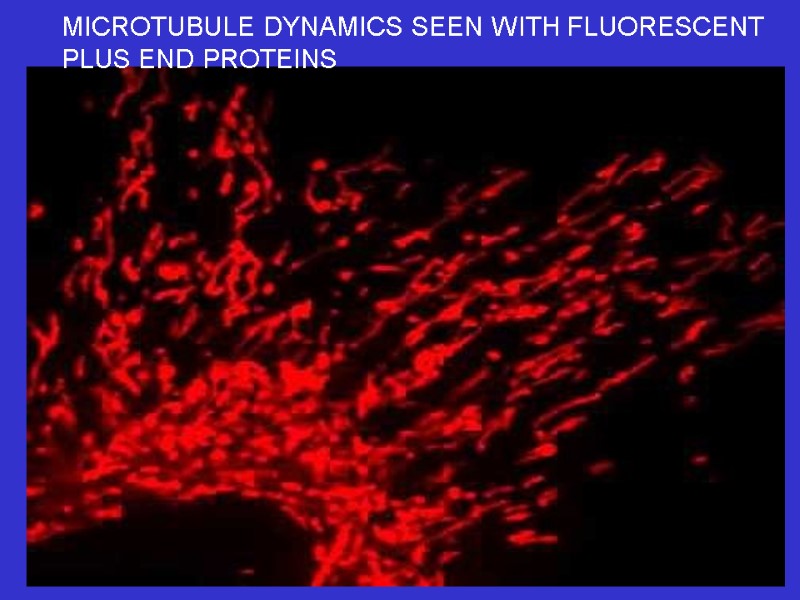
MICROTUBULE DYNAMICS SEEN WITH FLUORESCENT PLUS END PROTEINS
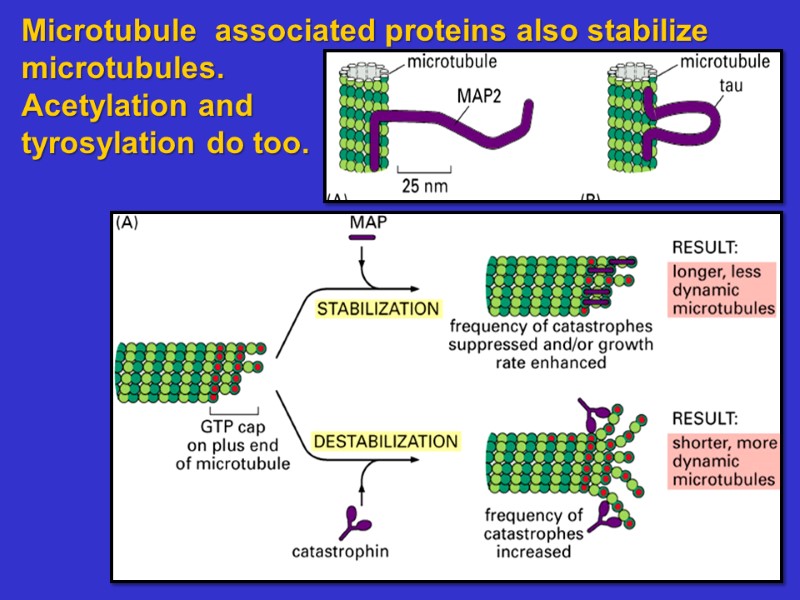
Microtubule associated proteins also stabilize microtubules. Acetylation and tyrosylation do too.
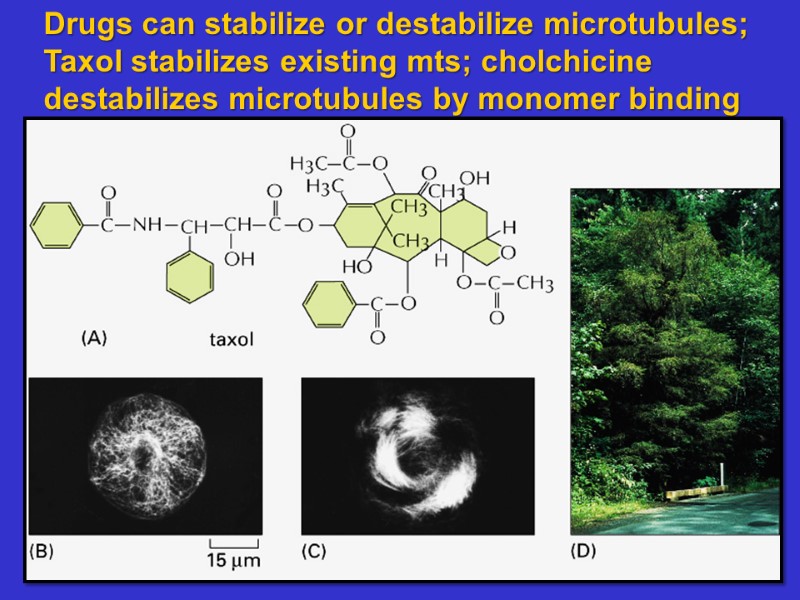
Drugs can stabilize or destabilize microtubules; Taxol stabilizes existing mts; cholchicine destabilizes microtubules by monomer binding
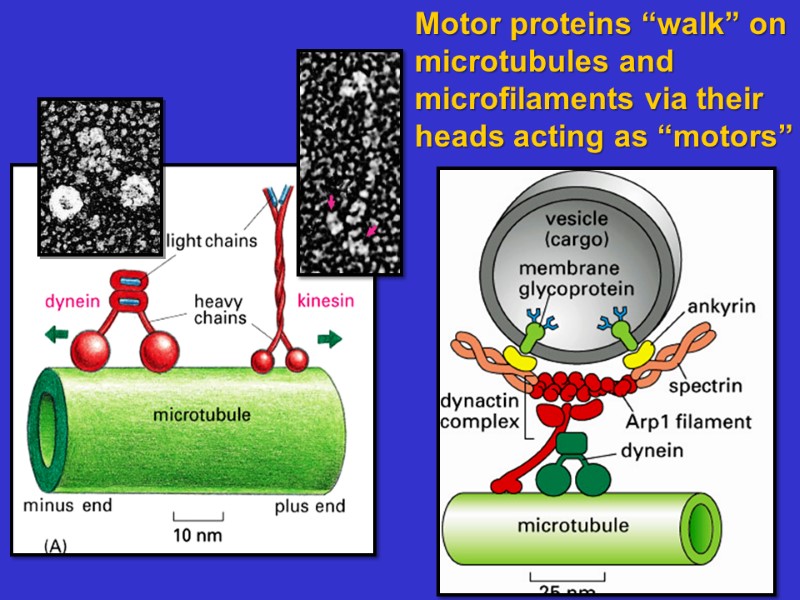
Motor proteins “walk” on microtubules and microfilaments via their heads acting as “motors”
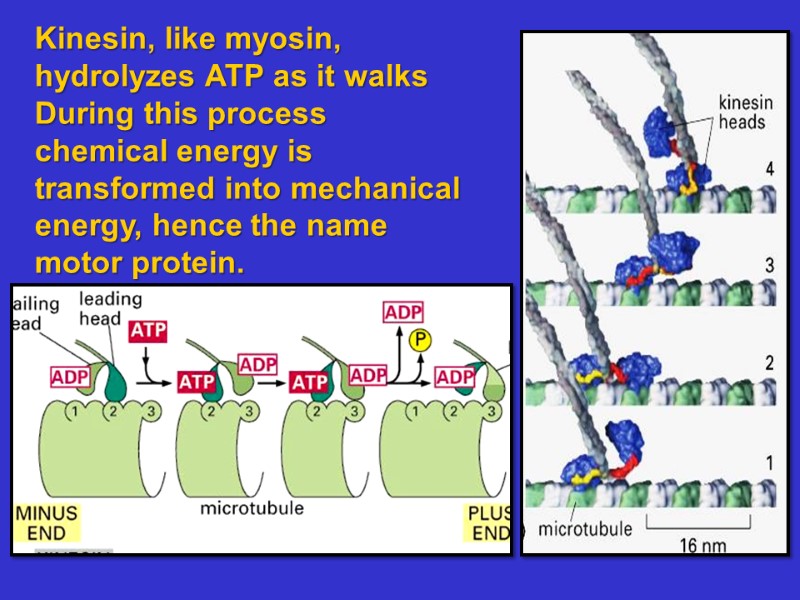
Kinesin, like myosin, hydrolyzes ATP as it walks During this process chemical energy is transformed into mechanical energy, hence the name motor protein.
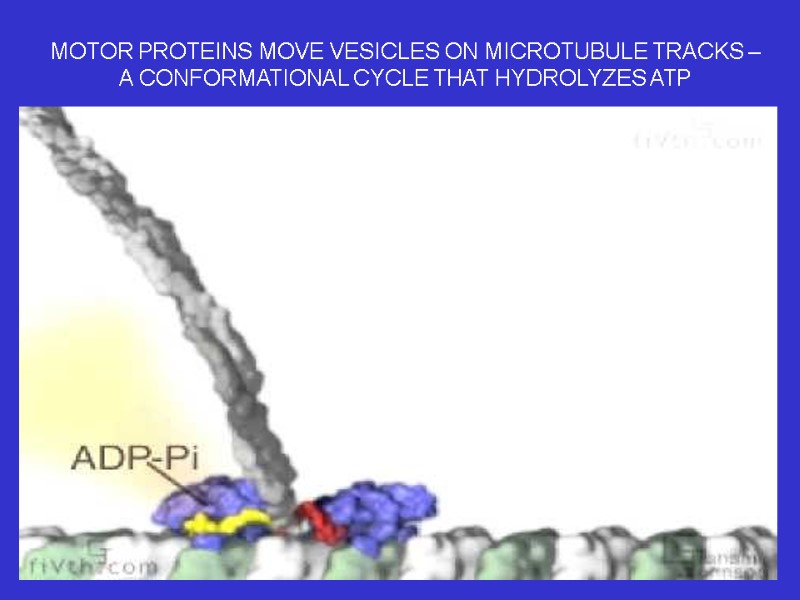
MOTOR PROTEINS MOVE VESICLES ON MICROTUBULE TRACKS – A CONFORMATIONAL CYCLE THAT HYDROLYZES ATP
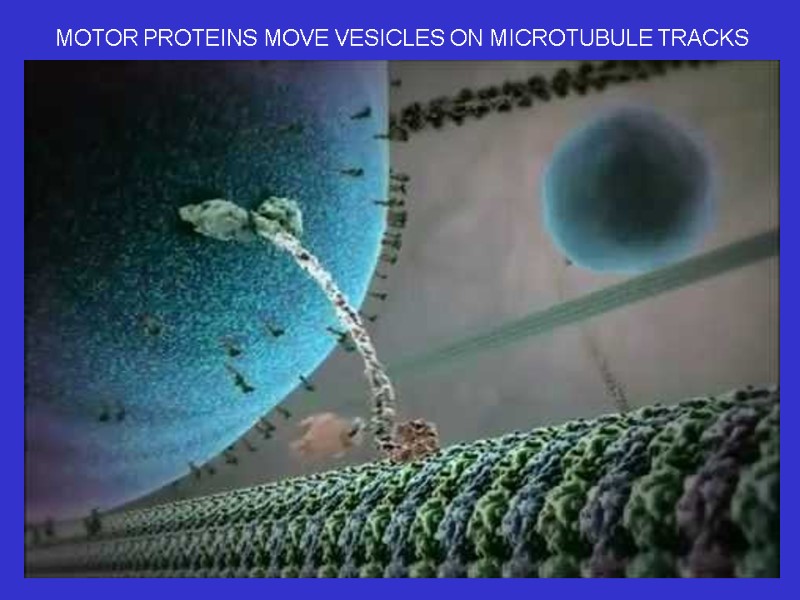
MOTOR PROTEINS MOVE VESICLES ON MICROTUBULE TRACKS
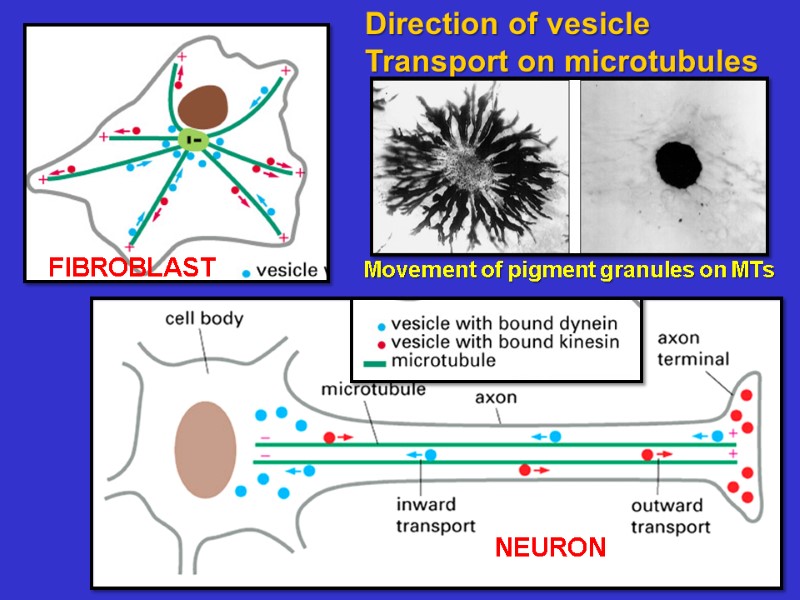
Direction of vesicle Transport on microtubules FIBROBLAST NEURON Movement of pigment granules on MTs
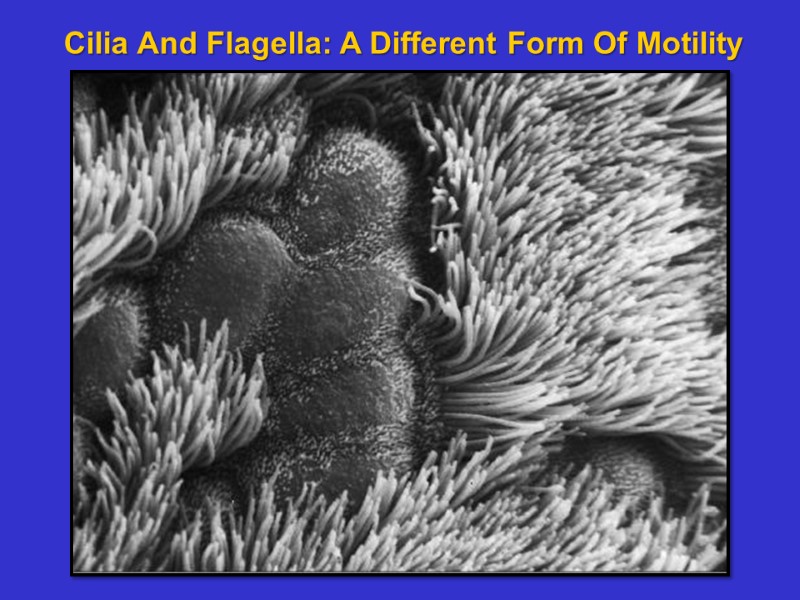
Cilia And Flagella: A Different Form Of Motility
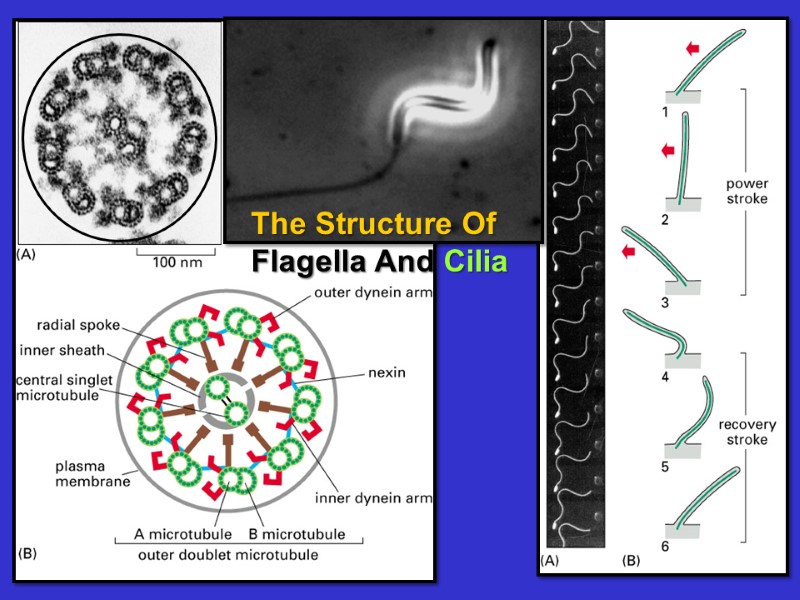
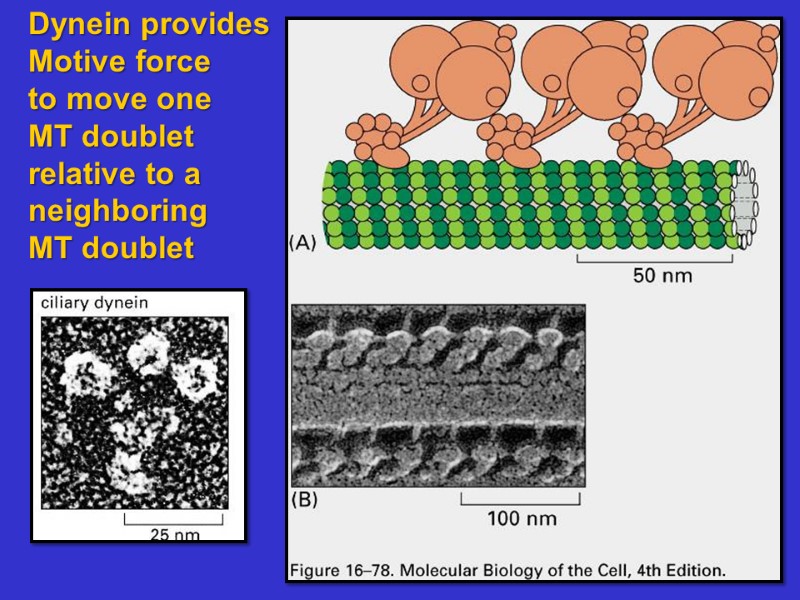
Dynein provides Motive force to move one MT doublet relative to a neighboring MT doublet
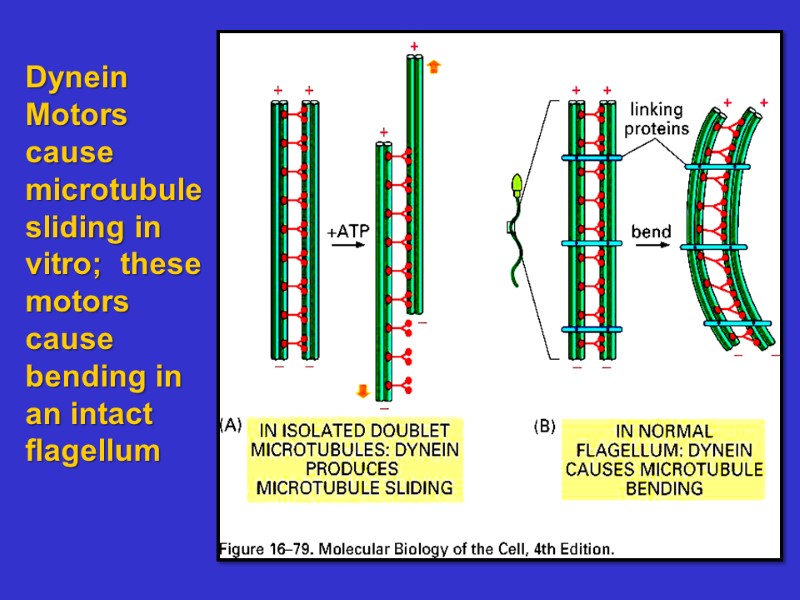
Dynein Motors cause microtubule sliding in vitro; these motors cause bending in an intact flagellum
10594-2017_lecture_20_bio_353_microtubules_and_the_cytoskeleton.ppt
- Количество слайдов: 30

